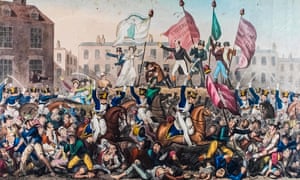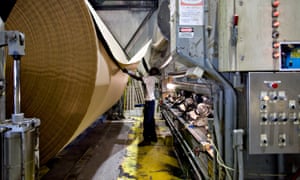via 3 Quarks Daily: Gopu Mohan at Caravan

The earliest known inscription of the Tamil word “paraya” is found in a Sangam-era text, Purananuru, composed between the second and third centuries. In his essay “Waiting to lose their patience,” Ravikumar noted that when the first modern edition of Purananuru was published in 1894, many historians claimed that the presence of the word “parayan” in Song 335 implied that a caste system existed 1,800 years ago. “Nondalit commentators understand this to mean that the discrimination and oppression of the parayars/dalits is not of recent origin,” he wrote, “and they derive solace in believing that untouchability is as old as the Sangam period.” The pioneering Dalit intellectual Iyothee Thass questioned the very authenticity of the text in his 1908 article “Is there a book called Purananuru?” According to Ravikumar, there is no way to verify whether the song exists in its original form, or whether it was added in later centuries. The second-oldest inscription of the word is from the thirteenth century, during the Chola period. In this case, Ravikumar writes, there are references to both paraya cheri, or paraya settlement, and theenda cheri, or untouchables’ settlement, indicating that the two were not the same. The conflation of untouchability with “paraya” had not yet occurred.
Continue reading
==============================
via the Guardian by Michael Hann
When Glen Campbell was diagnosed with Alzheimer’s, his daughter put her own career – and life – on hold. Now the country star’s back, downing pints and singing songs about smoking weed with Willie Nelson’s son

‘I was supposed to be starting my adult life. Part of me that wishes I could have known what that was like’ … Ashley Campbell
Ashley Campbell is certainly game. It’s barely noon, and she’s taking a break from a round of radio interviews. No coffee for her. Instead, she asks the woman at the bar what she’d been drinking the previous night. Yes, she says, I’ll have a pint of that.
Ashley is also perfectly happy to go off message. The press release for her debut album, The Lonely One, claims it is “intended to make listeners question everything they’ve ever known”. Really? That seems a little extreme. “Yes, I’ve been wondering about that,” she says, laughing. “I don’t know if it will make you question everything you’ve ever known. I hope it will help people make sense of things that are going on in their own lives by comparison and catharsis. Mainly, I hope people enjoy it.” That sounds a little more realistic.
Continue reading
==============================
a post by Alex Williams for Premier

Turkey's president and the Bulgarian prime minister have unveiled the historic Iron Church in Istanbul after a seven-year restoration project.
In Sunday's opening ceremony, Turkish President Recep Tayyip Erdogan said the 120-year-old Sveti Stefan Church remained the "single example" of a church built on an iron skeleton.
Continue reading
==============================
a post by Christian Jarrett for the Big Think blog

Portrait of brain-injury survivor Phineas P. Gage (1823–1860), shown holding the tamping iron which injured him. Image source: Wikimedia
These ten characters have all had a huge influence on psychology and their stories continue to intrigue each new generation of students. What’s particularly fascinating is that many of their stories continue to evolve – new evidence comes to light, or new technologies are brought to bear, changing how the cases are interpreted and understood. What many of these 10 also have in common is that they speak to some of the perennial debates in psychology, about personality and identity, nature and nurture, and the links between mind and body.
Continue reading
==============================
via Interesting Literature
The best poems of fatherhood and fathers
Previously, we offered our pick of the best poems about mothers and motherhood, so we thought we’d complement that with this selection of the greatest poems about fathers. What good father poems do you know? Here’s our top ten.
Continue reading
==============================
via the Guardian by Stephen Bates (long read)

It was to be a grand day out: a peaceful rally to call for political reform. But the authorities were spoiling for a fight. The Peterloo massacre marked a turning point in our democracy.
On the morning of 16 August 1819, an immense crowd poured into Manchester, perhaps the largest the town had ever seen. They came in an orderly and peaceful fashion. Banners bearing slogans such as “Liberty and Fraternity” and “Taxation without Representation is Unjust and Tyrannical” flapped in the breeze, and bands played patriotic tunes including Rule Britannia and God Save the King. It was a fine and sunny day.
On they came in cheerful mood; organised contingents from Bolton and Bury; 6,000 marching from Rochdale and Middleton; others from Saddleworth and Stalybridge; 200 women dressed in white from Oldham, together with families bringing their children and picnics with them.
Continue reading
==============================
via 3 Quarks Daily: Carl Zimmer in The New York Times
A diet of fiber-rich foods, such as fruits and vegetables, reduces the risk of developing diabetes, heart disease and arthritis. Indeed, the evidence for fiber’s benefits extends beyond any particular ailment: Eating more fiber seems to lower people’s mortality rate, whatever the cause. That’s why experts are always saying how good dietary fiber is for us. But while the benefits are clear, it’s not so clear why fiber is so great. “It’s an easy question to ask and a hard one to really answer,” said Fredrik Bäckhed, a biologist at the University of Gothenburg in Sweden. He and other scientists are running experiments that are yielding some important new clues about fiber’s role in human health. Their research indicates that fiber doesn’t deliver many of its benefits directly to our bodies. Instead, the fiber we eat feeds billions of bacteria in our guts. Keeping them happy means our intestines and immune systems remain in good working order. In order to digest food, we need to bathe it in enzymes that break down its molecules. Those molecular fragments then pass through the gut wall and are absorbed in our intestines.
Continue reading
==============================
What do we do when great artists are also moral monsters?
via Arts & Letters Daily: Terry Teachout in Commentary
Of all the news stories arising from the ongoing sexual-harassment crisis, the one involving James Levine has made the deepest impression on the world of art. This is not because anyone in the classical-music industry was surprised by accusations that the music director emeritus of the Metropolitan Opera had molested teenagers, since rumors of Levine’s interest in very young boys had circulated for four decades. It was, rather, because he was the first high-culture artist to be swept up in the scandal. Actors, producers, directors, comedians: All were brought low in the wake of the exposure of Harvey Weinstein as a serial abuser. But with the exception of Kevin Spacey, who had carved out a place for himself on the legitimate stage, these men belonged to the pop-culture domain. Not so Levine, the public figure most closely associated with America’s largest opera company. That he is also a conductor of the first rank caused lovers of classical music to find it especially painful that so great a career should now be ending in ignominy.
Continue reading
==============================
via the Guardian by David J Unger

A paper recycling and packaging plant in Staten Island, New York. Photograph: Bloomberg/Getty
Old Mohawk paper company lore has it that in 1946, a salesman named George Morrison handed his client in Boston a trial grade of paper so lush and even, so uniform and pure, that the client could only reply: “George, this is one super fine sheet of paper.” And thus Mohawk Superfine was born.
This premium paper has been a darling of the printing and design world ever since. “Superfine is to paper what Tiffany’s is to diamonds,” Jessica Helfand, co-founder of Design Observer magazine once said. “If that sounds elitist, then so be it. It is perfect in every way.”
Mohawk tells the Superfine origin story every chance it gets: on their website, in press releases, in promotional videos and in their own lush magazine, Mohawk Maker Quarterly. And now Ted O’Connor, Mohawk’s senior vice president and general manager of envelope and converting, is telling it again. He sits on an ottoman in a hotel suite on the 24th floor of what a plaque outside declares is “The Tallest Building in the World with an All-Concrete Structure”. It’s day one, hour zero of Paper2017 in Chicago, the annual three-day event at which the industry, its suppliers and its clients come together to network and engage in “timely sessions on emerging issues”. Attendees are rolling in and registering, and the Mohawk team is killing time before wall-to-wall meetings.
Continue reading
==============================
via Interesting Literature
What is the meaning behind Auden’s classic poem?
W. H. Auden wrote ‘Musée des Beaux Arts’ in December 1938, while he was staying in Brussels with his friend Christopher Isherwood. The museum and art gallery mentioned in the poem’s title, ‘Musée des Beaux Arts’, is the Brussels art gallery, Musées Royaux des Beaux-Arts de Belgique, which Auden visited. ‘Musée des Beaux Arts’ alludes to a number of paintings by old Dutch painters – the ‘Old Masters’ – which hang in the Belgian gallery.
Continue reading
No comments:
Post a Comment